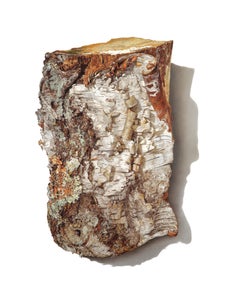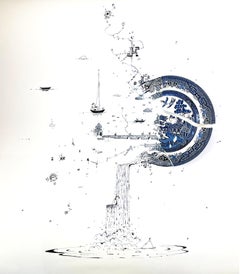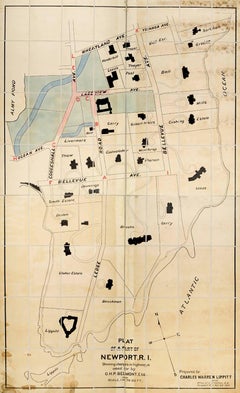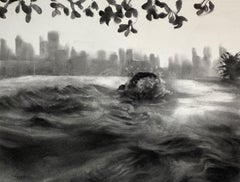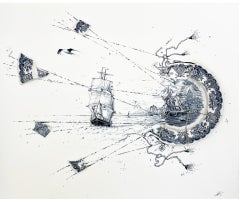Manhattan - Landscape Drawings and Watercolors
2010s Photorealist Manhattan - Landscape Drawings and Watercolors
Paper, Color Pencil
1980s Contemporary Manhattan - Landscape Drawings and Watercolors
Paper, Pastel
2010s Manhattan - Landscape Drawings and Watercolors
Porcelain, Ink, Digital
Early 20th Century Naturalistic Manhattan - Landscape Drawings and Watercolors
Ink, Watercolor
2010s Realist Manhattan - Landscape Drawings and Watercolors
Charcoal, Archival Paper
2010s Manhattan - Landscape Drawings and Watercolors
Porcelain, Ink
20th Century Contemporary Manhattan - Landscape Drawings and Watercolors
Paper, Pastel
2010s Surrealist Manhattan - Landscape Drawings and Watercolors
Watercolor, Archival Paper
2010s Contemporary Manhattan - Landscape Drawings and Watercolors
Paper, Charcoal
2010s Photorealist Manhattan - Landscape Drawings and Watercolors
Paper, Graphite
2010s Impressionist Manhattan - Landscape Drawings and Watercolors
Paper, Color Pencil
2010s Photorealist Manhattan - Landscape Drawings and Watercolors
Paper, Graphite
2010s Photorealist Manhattan - Landscape Drawings and Watercolors
Paper, Graphite
21st Century and Contemporary Contemporary Manhattan - Landscape Drawings and Watercolors
Archival Paper, Graphite
1910s American Realist Manhattan - Landscape Drawings and Watercolors
Paper, Watercolor
2010s Manhattan - Landscape Drawings and Watercolors
Archival Pigment
2010s Photorealist Manhattan - Landscape Drawings and Watercolors
Paper, Graphite
2010s Manhattan - Landscape Drawings and Watercolors
Porcelain, Ink, Digital
2010s American Realist Manhattan - Landscape Drawings and Watercolors
Archival Paper, Graphite
2010s Photorealist Manhattan - Landscape Drawings and Watercolors
Paper, Color Pencil
1930s American Realist Manhattan - Landscape Drawings and Watercolors
Paper, Ink, Watercolor
2010s Manhattan - Landscape Drawings and Watercolors
Porcelain, Ink
21st Century and Contemporary Contemporary Manhattan - Landscape Drawings and Watercolors
Archival Paper, Graphite
2010s Contemporary Manhattan - Landscape Drawings and Watercolors
Watercolor, Archival Paper
2010s Manhattan - Landscape Drawings and Watercolors
Paper, Pen
2010s Realist Manhattan - Landscape Drawings and Watercolors
Charcoal, Archival Paper, Graphite
Early 2000s Contemporary Manhattan - Landscape Drawings and Watercolors
Gold Leaf
2010s Contemporary Manhattan - Landscape Drawings and Watercolors
Paper, Watercolor
2010s Manhattan - Landscape Drawings and Watercolors
Porcelain, Ink, Digital
2010s Manhattan - Landscape Drawings and Watercolors
Porcelain, Ink, Digital
Mid-20th Century American Impressionist Manhattan - Landscape Drawings and Watercolors
Charcoal, Cardboard
21st Century and Contemporary American Realist Manhattan - Landscape Drawings and Watercolors
Graphite
Early 20th Century Contemporary Manhattan - Landscape Drawings and Watercolors
Paper, Crayon
2010s Manhattan - Landscape Drawings and Watercolors
Porcelain, Ink
1930s American Realist Manhattan - Landscape Drawings and Watercolors
Paper, Ink, Watercolor
21st Century and Contemporary Abstract Manhattan - Landscape Drawings and Watercolors
Archival Ink, Color Pencil, Watercolor
2010s Abstract Impressionist Manhattan - Landscape Drawings and Watercolors
Watercolor
Contemporary Manhattan - Landscape Drawings and Watercolors
Archival Paper, Graphite
2010s Contemporary Manhattan - Landscape Drawings and Watercolors
Paper, Ink, Watercolor
2010s Abstract Impressionist Manhattan - Landscape Drawings and Watercolors
Watercolor, Color Pencil
1990s Manhattan - Landscape Drawings and Watercolors
Paper, Watercolor
2010s Contemporary Manhattan - Landscape Drawings and Watercolors
Paper, Pencil, Graphite
2010s Contemporary Manhattan - Landscape Drawings and Watercolors
Paper, Graphite
2010s Contemporary Manhattan - Landscape Drawings and Watercolors
Paper, Ink
2010s Contemporary Manhattan - Landscape Drawings and Watercolors
Watercolor, Archival Paper
2010s Abstract Manhattan - Landscape Drawings and Watercolors
Paper, Ink
2010s Abstract Manhattan - Landscape Drawings and Watercolors
Paper, Ink
1920s Manhattan - Landscape Drawings and Watercolors
Woodcut
2010s American Realist Manhattan - Landscape Drawings and Watercolors
Paper, Ink
2010s Contemporary Manhattan - Landscape Drawings and Watercolors
Paper, Watercolor
2010s Conceptual Manhattan - Landscape Drawings and Watercolors
Archival Ink, Watercolor, Archival Paper
2010s Contemporary Manhattan - Landscape Drawings and Watercolors
Paper, Watercolor
2010s Photorealist Manhattan - Landscape Drawings and Watercolors
Paper, Graphite
2010s Conceptual Manhattan - Landscape Drawings and Watercolors
Archival Ink, Watercolor, Archival Paper
21st Century and Contemporary Contemporary Manhattan - Landscape Drawings and Watercolors
Archival Ink, Archival Paper, Charcoal, Graphite, Watercolor
1920s Manhattan - Landscape Drawings and Watercolors
Woodcut
21st Century and Contemporary Contemporary Manhattan - Landscape Drawings and Watercolors
Charcoal, Graphite, Ink, Paper, Watercolor
2010s Contemporary Manhattan - Landscape Drawings and Watercolors
Archival Paper, Graphite
2010s Contemporary Manhattan - Landscape Drawings and Watercolors
Acrylic
1990s Manhattan - Landscape Drawings and Watercolors
Paper, Watercolor
